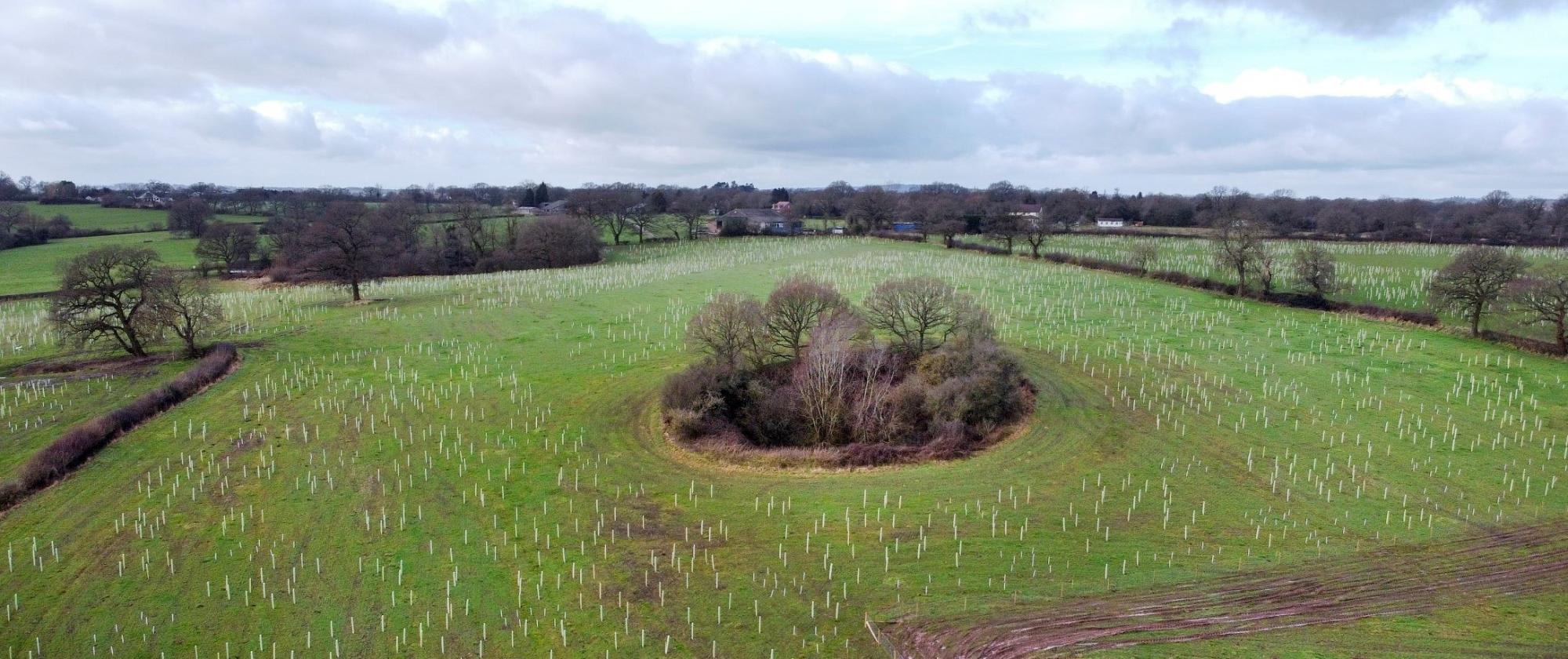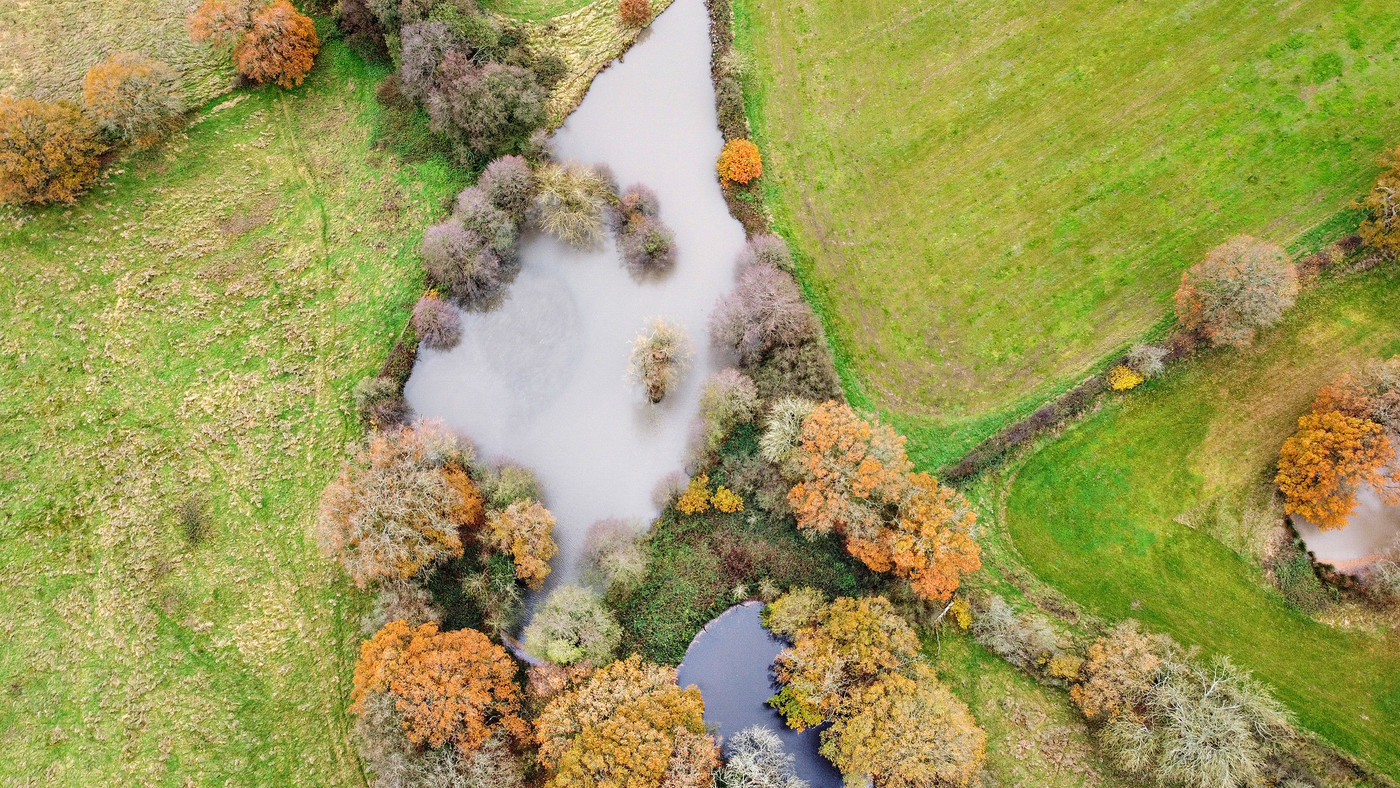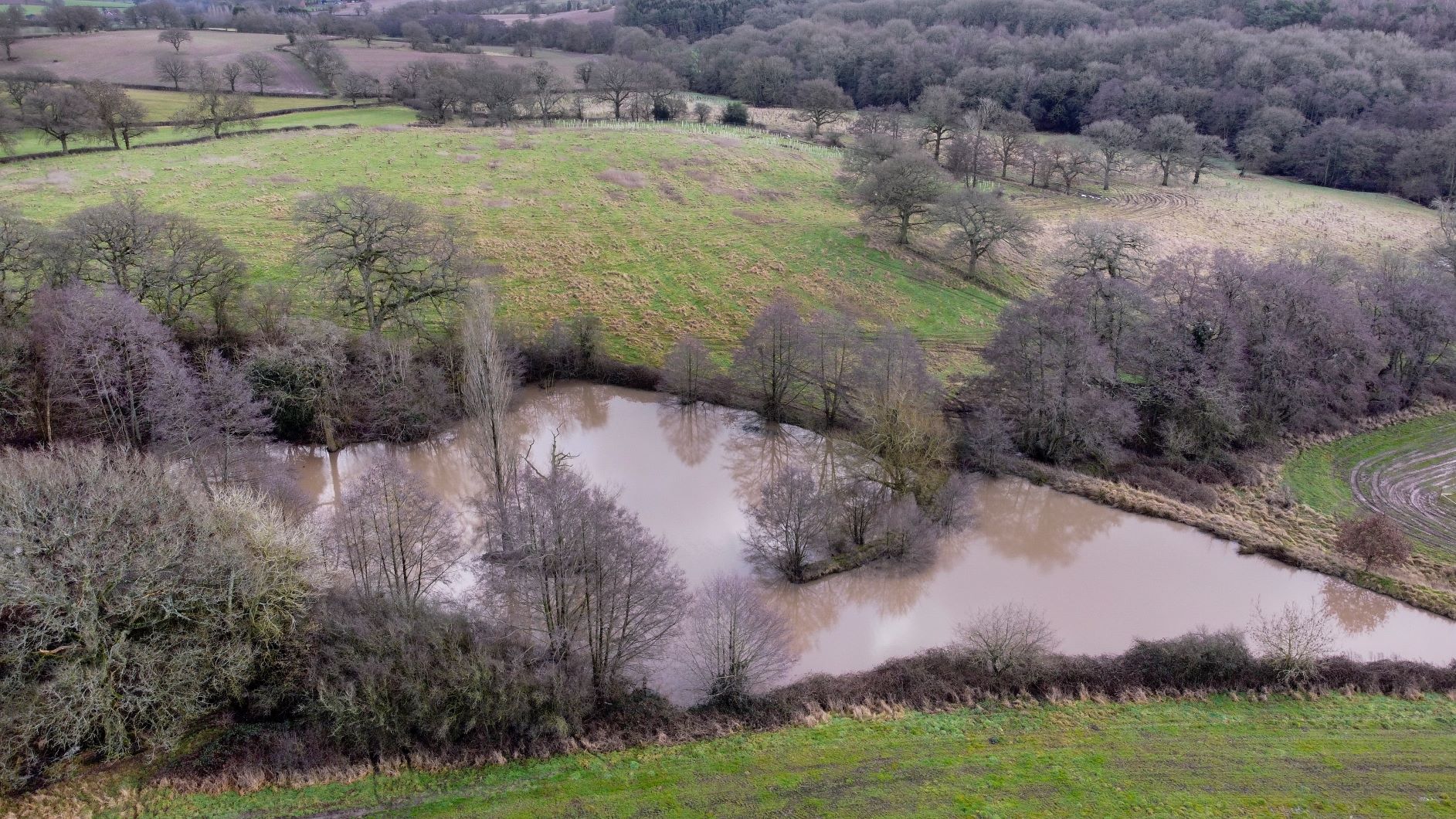
The right tree in the right place
Tree planting is a key way of combatting climate change, as trees sequester carbon by capturing carbon dioxide from the atmosphere as they grow. However, it is not just about the quantity of trees that go in the ground, planting the right tree in the right place for the right reason is crucial. Read more about the significance of sustainable planting in creating woodland habitats that will survive and thrive in the long term.

The importance of sustainable tree planting
The UK Government has set a target of increasing woodland cover across the UK to 16.5% by 2050. There is currently 13.5% (Forestry Facts & Figures 2024) woodland cover in the UK, so significant tree planting will need to take place to reach this target. Here at the Heart of England Forest, we are contributing to this with our ambitious vision of planting and protecting a 30,000 acre native broadleaf forest. We are planting new sites each year as we continue to grow our forest and contribute to the national target.
However, it is not just about planting as many trees as possible, good silviculture is needed when creating sustainable woodland. Some species of trees do not thrive on certain land types or are unsuitable for practical reasons. Poorly designed woodland can create problems in the landscape for the communities which live around them, so good design, which accounts for all the sensitivities is important. This leads to tree species selection, ensuring only suitable trees are planting, which meet the objectives for the land.
To achieve this, we put a lot of time and effort into planning and managing our sites to ensure the right trees go in the right places for the right reasons.
Considering the landscape

To help decide what trees to plant and where to plant them, we rely on the natural landscape and the expertise of our staff to help us decide where to plant trees in the Forest.
When first deciding where best to plant trees, we consider the landscape and what is already present on site. There are areas where tree planting is not appropriate because of designations such as archaeological sites, managed parkland landscapes, sites designated for important wildlife habitats such as SSSI’s, or priority habitats which are valuable for some plant and animal species.
We turn these constraints into opportunities and preserve and work around what is already there. On a local level, we are also considerate of our neighbours and undertake consultation and plan our woodland planting to avoid obstructing important views around their properties.
In deciding what species to plant where, we follow nature’s guidelines. Historically, many of the sites around the Forest were part of the ancient Forest of Arden and the Forest of Feckenham. We do what we can to reforest those areas to mimic what they may have looked like in the past. The Forest of Arden would have been an oak woodland, so we focus on planting species that would be found in this type of woodland.
Often our existing hedgerows give a good indication of the right trees to plant: north of the River Avon the dominant hedgerow tree is oak in many areas, and we like to think of these as the descendants of the ancient forest.
Land and soil quality
The quality of the land is a major influence in which trees are most suitable for each site. It is generally agreed that productive arable land - including Agricultural Land Class grades 1 and 2 where crop production is easiest and most profitable - is probably to be avoided when creating landscape-scale woodland. We therefore focus most of our woodland creation on lower grade agricultural land (grades 3-5), which are less productive for crops.
We have many areas dominated by heavy clay soil with some clay loams which is often a fertile soil type, however, not all our soils are suitable for growing trees without intervention, and we need to make sure we address fertility issues when planting to ensure trees thrive. We match some trees species to certain sites types, for example, we will plant willow and alder on wetter soils, often close to a stream or pond.
We plant a mixture of trees, with a wide variety of species which include shrubs, trees of smaller stature such as rowan and tress which will create a high canopy, such as oak. A diverse mix, helps build sustainability, so the woodland is better able to cope with different pests and diseases and climatic change.
When laying out the planting site, we will climb certain trees species together, such as hazel, which can create a future coppicing area, or shrubs so they don't get shaded out by larger trees and create suitable thickets for bird nesting.
It is not always the right place for a tree

It is important to break up areas of woodland with wide grassland rides, wetland habitats, and hedgerows to create a mosaic of habitats. We estimate that up to 40% of our woodland at the Heart of England Forest does not actually have any trees on it! This idea originated with our founder Felix Dennis who wanted to create a light and airy Forest. This is not only visually striking but is the good for biodiversity as lots of microhabitats are created in shady, sheltered spots along a forest ride or in a wet patch.
We recognise the importance of integration with other land uses and do consider when fields are best suited to remain in agriculture. For example, we have two fields in the Forest that have grade 2 alluvial soil which is perfect for growing crops. We have now dedicated this area to our new social enterprise tree nursery, so that we can grow our own trees and generate income for the charity.
Also, at Oak Wood, we identified an opportunity to develop wetland alongside a tributary to the River Alne, an important habitat type that is increasingly rare in Warwickshire. Other habitats are also under threat and important in their own right. For example, we have lost 97% of our flower-rich meadows since the early 20th century, so we would look to incorporate these important and botanically-rich habitats into our overall mosaic rather than planting trees on them.
Trees and wildlife

Another factor that influences tree planting is the wildlife that inhabits that area. We carry out wildlife surveys across the Forest to help inform our habitat management plans, ensuring that species can thrive.
Different species have different habitat preferences called niches which are important to maintain if we want to encourage them to remain on our sites. An example of this in the Forest would be the large amounts of naturally regenerated goat willow close to the high canopies of mature woodland. This is an ideal habitat for the rare purple emperor butterfly, which we knew was present around the Forest, and which will significantly increase as we continue developing this aspect of our woodland.
Our Bearley site is another great example of how we monitor and respect the wildlife in different areas of the Forest. A survey found that skylarks, a Red List Species of Conservation Concern, are nesting there, and so to encourage a permanent presence we are keeping fourteen acres of open grassland. The land had previously been intensively managed arable land that probably made no allowance for skylarks, so this should be a hugely beneficial adjustment for biodiversity in the area.
The right tree in the right place

There is a multitude of reasons why it is important to make sure trees are planted in the right places, and we are thrilled to see other initiatives across the nation encouraging this in our fight against climate change.
You can support our ambitious vision of creating a 30,000 acre Forest that includes tree planting and the creation of a mosaic of other woodland habitats.



